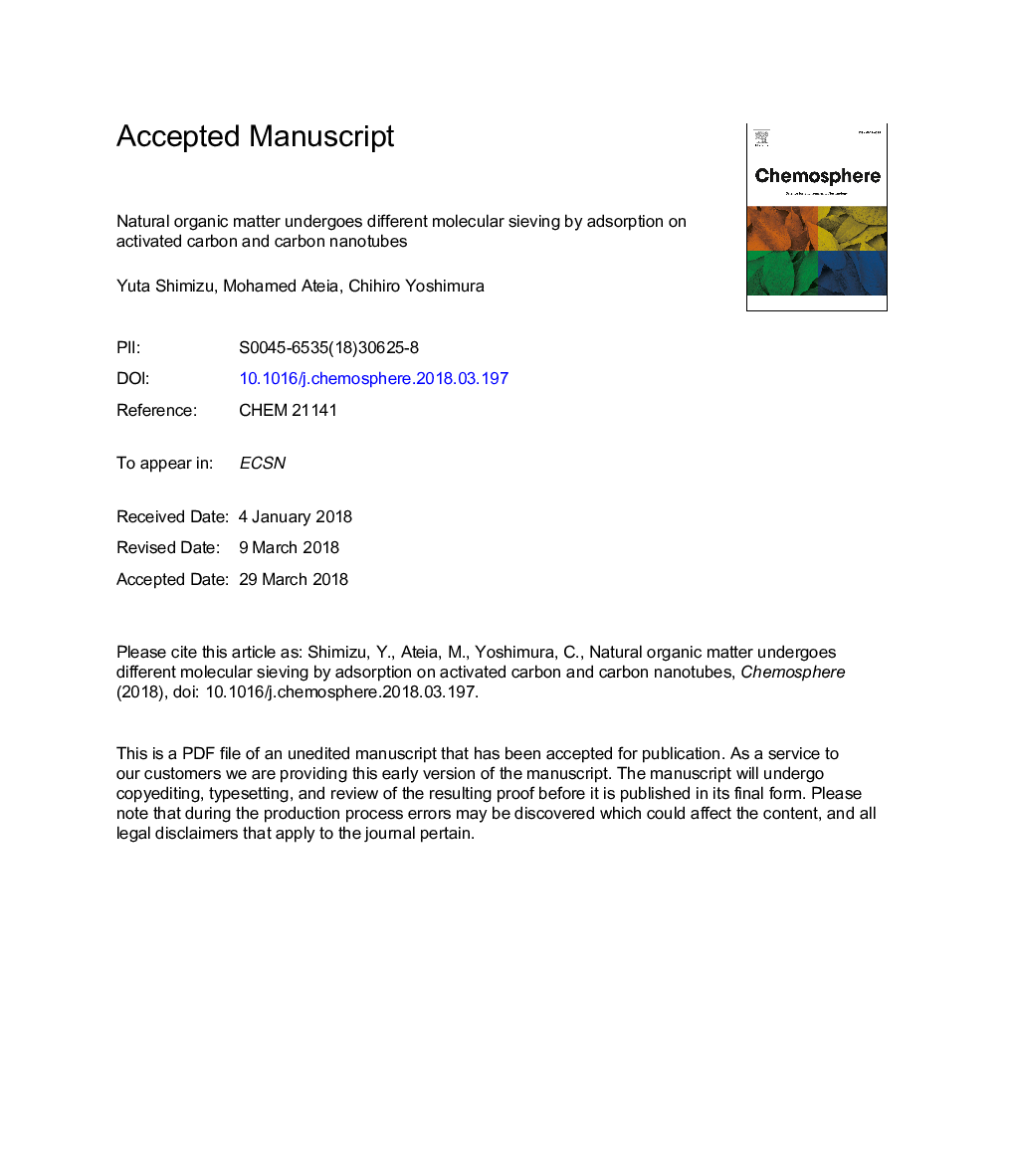| Article ID | Journal | Published Year | Pages | File Type |
|---|---|---|---|---|
| 8851329 | Chemosphere | 2018 | 25 Pages |
Abstract
We have comprehensively compared the molecular sieving of natural organic matter (NOM) by adsorption on activated carbon (AC) and multi-walled carbon nanotubes (CNT) using different types of NOM. All water samples were characterized using UV-visible and ï¬uorescence spectroscopies as well as high-performance size-exclusion chromatography (HPSEC) before and after adsorption. Adsorption isotherm results fitted well with Freundlich model (R2â¯=â¯0.95-0.99) and the model parameters indicated higher adsorption of NOM on CNT than AC. Fluorescence index (FI) and freshness index (BIX) showed preferential adsorption of microbial derived and fresh NOM on AC, whereas, terrestrial derived and decomposed NOM were preferentially adsorbed on CNT. Further, HPSEC revealed that AC adsorbed NOM fractions with small molecular weight (MW) (<0.4â¯kDa) faster than the fractions with higher MW. In contrast, CNT adsorbed NOM fractions characterized by high MW (>1â¯kDa) while the smallest fraction (<0.4â¯kDa) was not adsorbed, possibly due to its hydrophilic character. Our results also demonstrated a good correlation between FI and average MW of NOM (R2â¯>â¯0.93). These findings illustrate the influence of the adsorbent's type and characteristics (i.e., porosity and pore size distribution) on the preferential adsorption of different NOM fractions.
Related Topics
Life Sciences
Environmental Science
Environmental Chemistry
Authors
Yuta Shimizu, Mohamed Ateia, Chihiro Yoshimura,
